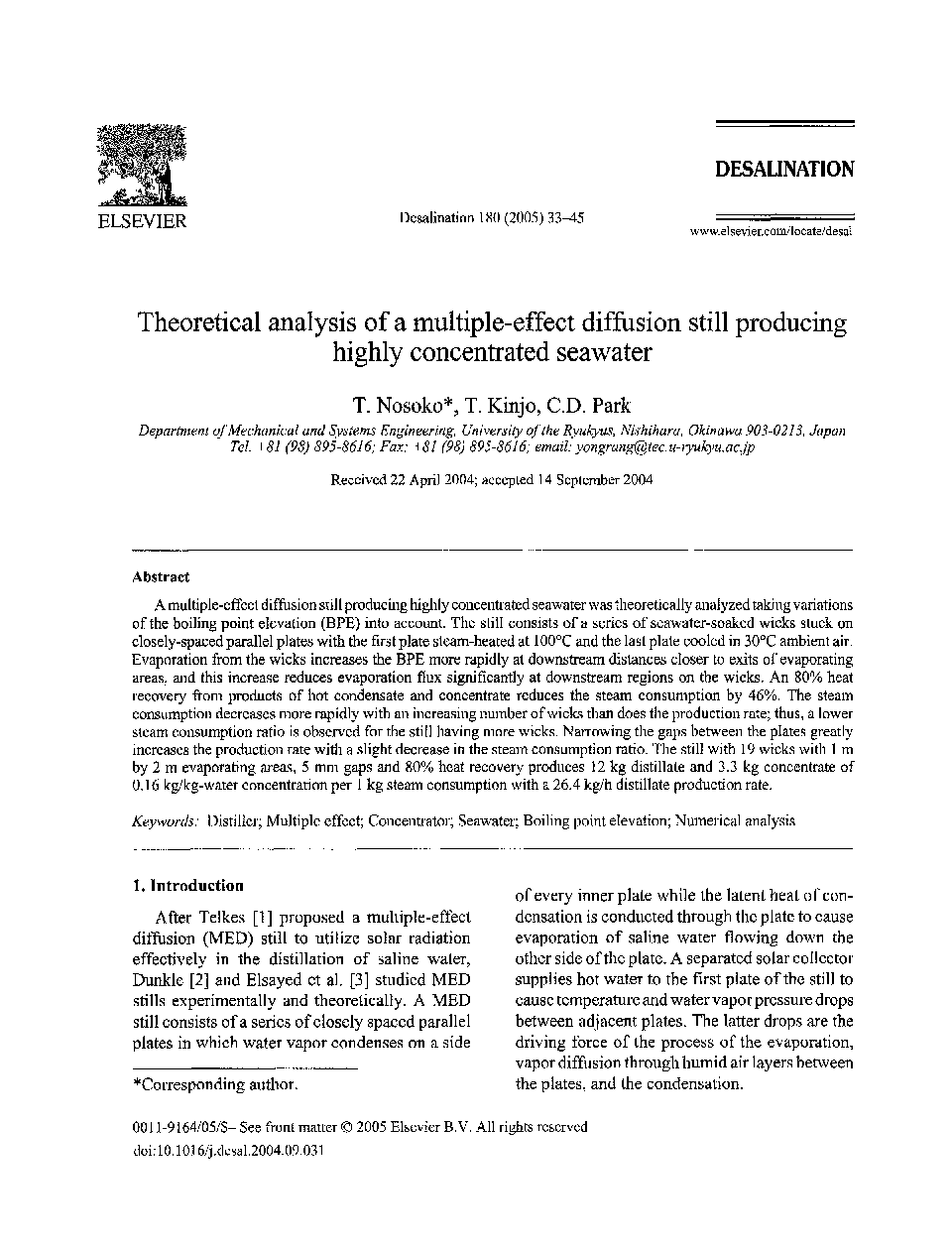| Article ID | Journal | Published Year | Pages | File Type |
|---|---|---|---|---|
| 9681053 | Desalination | 2005 | 13 Pages |
Abstract
A multiple-effect diffusion still producing highly concentrated seawater was theoretically analyzed taking variations of the boiling point elevation (BPE) into account. The still consists of a series of seawater-soaked wicks stuck on closely-spaced parallel plates with the first plate steam-heated at 100°C and the last plate cooled in 30°C ambient air. Evaporation from the wicks increases the BPE more rapidly at downstream distances closer to exits of evaporating areas, and this increase reduces evaporation flux significantly at downstream regions on the wicks. An 80% heat recovery from products of hot condensate and concentrate reduces the steam consumption by 46%. The steam consumption decreases more rapidly with an increasing number of wicks than does the production rate; thus, a lower steam consumption ratio is observed for the still having more wicks. Narrowing the gaps between the plates greatly increases the production rate with a slight decrease in the steam consumption ratio. The still with 19 wicks with 1 m by 2 m evaporating areas, 5 mm gaps and 80% heat recovery produces 12 kg distillate and 3.3 kg concentrate of 0.16 kg/kg-water concentration per 1 kg steam consumption with a 26.4 kg/h distillate production rate.
Related Topics
Physical Sciences and Engineering
Chemical Engineering
Filtration and Separation
Authors
T. Nosoko, T. Kinjo, C.D. Park,
